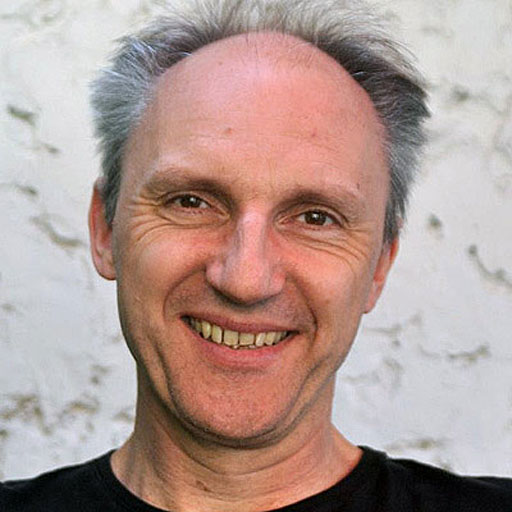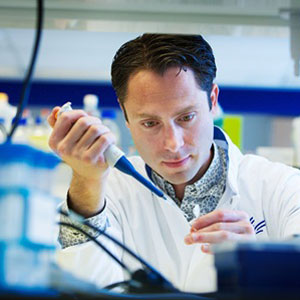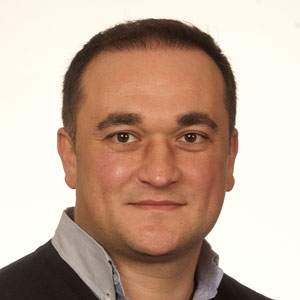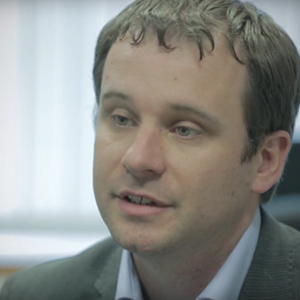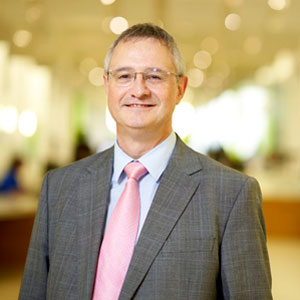Glioblastoma research
A glioblastoma, also known as a GBM, is the fastest growing form of the glioma brain tumour and is extremely difficult to treat, with just 3.3% of patients surviving beyond two years.
A glioblastoma is a high grade (grade 4) glioma, meaning that it is highly aggressive and can spread to other areas of the brain. We are determined to understand how and why this tumour type forms and develop new, effective treatments.
- Current glioblastoma research projects
- Current high grade brain tumour research projects that also include glioblastoma
- Past research projects that included glioblastoma
Current Glioblastoma research projects
Here are the research projects we are currently funding that relate to understanding or treating glioblastoma

Dr. Angel Alvarez-Prado
Hijacking an innate immune mechanism present in all malignant cells
Dr Angel Alvarez-Prado at the University of Lausanne is developing a novel therapeutic approach to treat glioblastoma by inhibiting ADAR1 in combination with TME-targeted immunotherapies, targeting cancer cells and their supporting microenvironment.

Dr. Claire Vinel
A first-time characterisation of the communication between glioblastoma and the skeletal muscle
Dr Claire Vinel at Queen Mary University of London is investigating the relationship between glioblastoma and skeletal muscle, with the goal of identifying molecules that promote tumour growth or sarcopenia that could lead to the development of new drugs to improve patient outcomes.

Dr. Mara De Martino
Shining a light on the role of lipid metabolism as a barrier to successful brain tumour treatment
Dr Mara De Martino at Weill Cornell Medicine is investigating the connection between lipid metabolism and immune escape in glioblastoma. Her goal is to identify molecules that promote treatment resistance and develop novel treatments targeting lipid pathways to enhance immunotherapy effectiveness against brain malignancies.

Dr. Christopher Mount
Engineering cells of the immune system to target the complex mixtures of cells in adult and paediatric gliomas
Dr. Mount from Harvard Medical School is developing a new approach to treat gliomas by engineering immune cells to specifically identify and destroy multiple types of cells within the tumour.

Dr. Ola Rominiyi
Investigating DNA repair on a cell-by-cell basis in glioblastoma
Dr. Ola Rominiyi at the University of Sheffield is researching DNA repair in glioblastoma on a cellular level to identify treatment vulnerabilities. His work aims to create new treatment strategies with DNA repair inhibitor drugs that are more effective and have fewer side effects.

Dr Tyler Miller
Understanding how immune cells block glioblastoma treatments
In this exciting project, Dr Miller and his team will focus on immunosuppressive cells found in glioblastomas, which are currently believed to be preventing breakthrough immunotherapies from attacking brain tumours.

Dr Veronica Rendo
Making MDM2 resistance a thing of the past
Dr Rendo is striving to understand how laboratory models of glioblastoma (GBM) become resistant to MDM2 inhibitors and to use this understanding to propose combinations of drugs to overcome or prevent the occurrence of resistance.
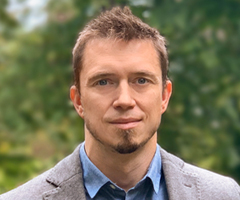
Dr Spencer Watson
Targeting treatment damage to stop recurrence
Dr Watson’s work will explore whether glial scars, formed in response to injury such as radiotherapy or surgery, provide a microenvironment that tumour cells can use as a safe space to relapse from.
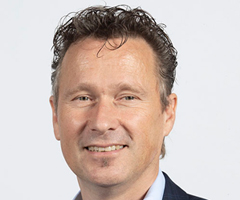
Dr Pim French
Blocking hypersensitive glioblastoma growth
In this project Dr Pim French and his team are learning new ways to stop the activation of a protein called epidermal growth factor receptor (EGFR). When EGFR is mutated in tumours it can be activated too easily, making glioblastomas grow quickly. By blocking this type of EGFR Dr French wants to slow, or even completely stop, tumour growth.

Professor Sebastian Brandner
Nanoparticle couriers for GBM treatments
When it comes to glioblastoma (GBM) treatments, there two key challenges: effective treatments and how to deliver them across the blood brain barrier. This grant has a fresh approach to both. Professor Brandner’s team are testing whether microRNAs can stop tumour growth when delivered by nanoparticles.

Mr Ola Rominiyi
3D models to understand invading GBM cells
This innovative research project will develop a new 3D model of glioblastoma (GBM) for lab assessments. The researchers, based in Sheffield, will also use the model to prioritise some of the best potential drugs to enhance current therapies.
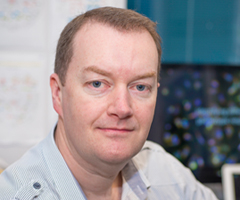
Professor Neil Carragher
Targeting, treating and defeating glioblastoma
Professor Carragher will adopt a systematic approach to find new drug targets and new drug combinations to treat glioblastomas. In addition to discovering new combinations of drugs, they’ll continue their work by testing drug combinations already discovered by their team.
This grant will allow researchers to suggest new combinations of therapies which have the greatest chance of being effective and well-tolerated in people. We hope that these new therapy combinations will signify a real step-change in the lives of people with a glioblastoma, improving quality of life and length of survival.
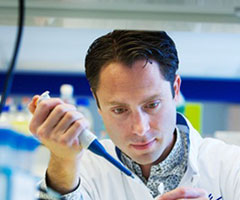
Professor Thomas Wurdinger
Investigating combined drug treatments
This collaboration, being led from Amsterdam, will also involve UK researchers from the University of Cambridge, the Sanger Institute and IOTA Pharmaceuticals. They will be looking at existing drugs in different combinations. They have sophisticated software that will analyse already-licensed drugs to see which ones could work together to treat Glioblastoma (GBM).
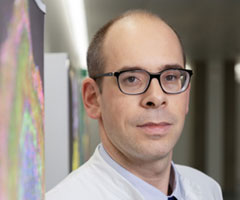
Dr Gregor Hutter
Manipulating the tumour’s environment
The environment in which a tumour exists contains several different types of cells. Some of these cell types support tumour growth and promote its spread to other parts of the brain. Microglia are one of the cell types that play an important role in supporting tumour growth. However, researchers have shown that it’s possible to manipulate and reprogramme microglia to have an anti-cancer function.
The aim of Dr Hutter’s research is to use a combination of drugs to reprogramme microglia to kill glioblastoma cells.

Dr Lucy Stead
Using nanobiopsy to characterise tumour cells
Glioblastomas are the most common, and one of the most aggressive types of brain cancer found in adults.
Standard treatments always result in tumour regrowth. What we don’t know is whether glioblastoma cells are naturally resistant to treatment or whether treatments cause changes within the cells that make them resistant.
This project is using advanced technology called nanobiopsy to extract tiny samples from living cells without killing them.

Prof Steve Pollard
Linking glioblastomas to DNA-protein parcels
Dr Pollard and his group are exploiting the latest genome editing technologies that have opened up new opportunities for understanding the biology of glioblastomas (GBM).

Prof Adam Waldman
Predicting patient survival – a new method of MRI
Researchers at Imperial College London have developed a new MRI scanning technique that will accurately measure how a tumour is responding to therapy.
The team, led by Dr Adam Waldman, have developed a technique called Diffusion Weighted Imaging (DWI) which measures the properties of water in both the tumour and surrounding brain to detect changes in growth. These changes can be identified at an earlier stage using DWI in comparison with standard MRI.
This technique will now be trialled in newly diagnosed glioblastoma patients across five different brain tumour research centres to confirm whether DWI is a more reliable method than standard MRI.
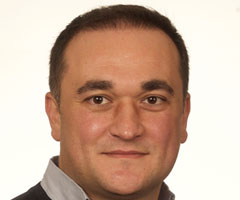
Dr Vincenzo D'Angiolella
Targeting glioblastoma cell metabolism
Despite aggressive treatment for glioblastomas, tumour recurrence is inevitable, highlighting the urgent need to understand why these treatments are failing.
This research project will help improve our knowledge the differences between healthy brain tissue and tumour cells. It will help us better understand the underlying mechanisms driving aggressive glioblastomas, and identify ways in which we can disrupt these interactions with drugs to slow tumour growth.

Professor Roel Verhaak
Tracking and Targeting Glioblastoma
Professor Verhaak aims to understand how extra chromosomal DNA or ecDNA is created and maintained in cancer cells, and will then go on to develop strategies to treat glioblastomas by targeting ecDNA.
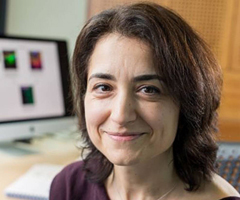
Professor Simona Parinello
Mapping glioblastoma cells
Professor Parrinello, and her colleagues at Imperial College London, aim to understand how glioblastomas spread into the brain and how they use small molecules as messengers to communicate with surrounding cells.
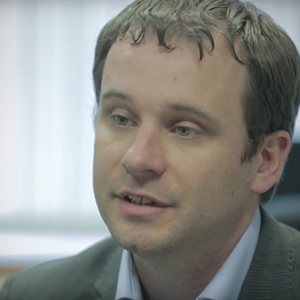
Dr Stuart Smith
Targeting Glioblastoma drug resistance through RNA methylation
Researchers, led by Dr Stuart Smith in Nottingham, will investigate the levels of RNA methylation in GMB cells and compare them to levels in low grade tumours. They will then test the theory that RNA methylation is responsible for some GBM tumours becoming resistant to current treatments.

Dr. Jun Ishihara
Elimination of recurrent glioblastoma using tumour-collagen targeted IL-12
Current high grade brain tumour research projects
Here are the research projects we are currently funding that relate to understanding or treating high grade brain tumours, including glioblastoma

Professor Colin Watts
Tessa Jowell BRAIN MATRIX
The Tessa Jowell BRAIN-MATRIX is a first-of-its-kind study that will enable doctors to treat brain tumours with drugs that are more targeted than ever before. We are excited to be investing £2.8 million to set the study up, and to drive it into the future.
Although the trial is being led from the UK, we expect it to deliver global impact for brain cancer patients.

Dr Jan Schuemann
Extreme dose rate proton therapy
Previous studies have shown that delivering radiotherapy extremely rapidly can dramatically reduce side-effects. Radiation therapy that delivers the same dose of radiation in a much shorter period of time is called extreme dose radiation (EDR). EDR therapy has not been tested using proton beams, and that’s where this innovative research project comes in.
The research team, led by Dr Schuemann, will use pre-clinical models to test EDR proton therapy with the aim of establishing a treatment regimen that’s effective and well-tolerated by people. They’ll compare EDR to conventional radiation delivery and look for any differences in side-effects, specifically looking into the effects on cognition and motor control.
Past research projects:
- Drug delivery avoiding the blood brain barrier
- Does STAT3 help form a barrier around GBM?
- Advancing imaging methods to improve surgical outcomes
- Repurposing drugs to treat glioblastoma
- Understanding gliobastoma initiation
- Cancer-killing viruses for high grade glioma
- Using Artificial Intelligence (AI) for more accurate diagnoses
- Investigating tumour initiating events
- Reducing the effects of fatigue
- Using drugs and gels to bypass the blood brain barrier
- Making radiotherapy more effective in GBM
- Exploring brain networks
- Delivering gene editing technology across the blood brain barrier
- Studying the interaction between genetically different cells in glioblastoma tumour
- Delivering nano-needles to edit tumour genes
- Boosting the immune system to beat brain tumours
- Shutting down the energy generators in brain tumours
- A new mouse model to defeat glioblastoma
- Beating therapy resistance with fluorescent dye
- Changing the environment around glioblastoma to improve immunotherapy treatments
- Developing drugs against a tumour causing protein in glioblastoma
- Identifying molecular compounds for drug delivery to target glioblastoma tumour cells
- Harnessing the power of tumour enzymes to activate drugs
- 3D printing of brain tumour cells
- Understanding left over tumour cells
- Unwrapping genes to find new treatments
- DAXX – a new target for brain tumour drugs
In this section
Share your experiences and help create change
By taking part in our Improving Brain Tumour Care surveys and sharing your experiences, you can help us improve treatment and care for everyone affected by a brain tumour.









